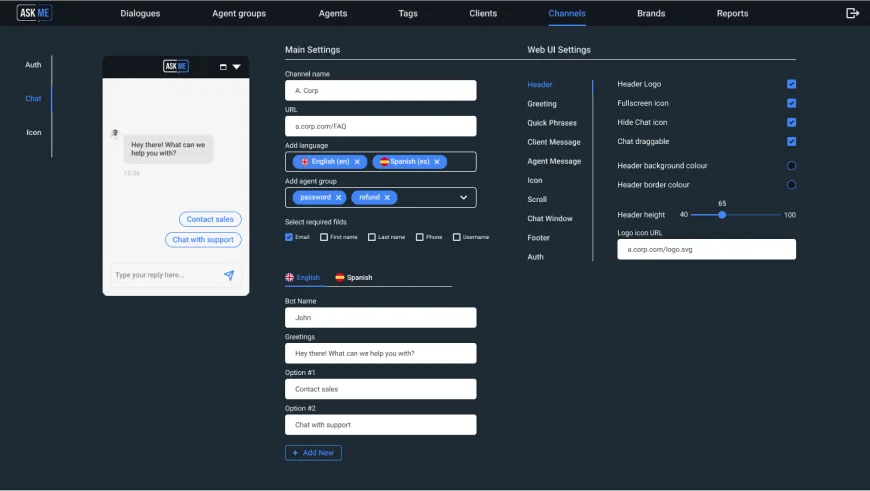What is Embedded Finance and How Do Shopify, Amazon, and Uber Use It? । Binariks
Building a successful embedded finance proposition will require a fundamental rethinking of the capabilities needed, especially in terms of risk. Having a certain share of nonbanked customers unconditionally processed through a real-time credit decisioning engine will challenge most banks’ tolerance for risk. Banks and regulators will have to get comfortable with platforms and enablers making credit decisions that may affect traditional balance sheets, based on real-time and contextual data held outside of the bank. Looking at industries, retail and e-commerce platforms form the lead use cases. They’re highly digitized, with universally accepted checkout and payment options. Though the domain of embedded finance expands by the day and draws in more financial offerings, we focus here on the key segments of embedded payments, lending, banking, and cards within the US.

Simply put, embedded finance is the use of financial tools or services — such as lending or payment processing — by a non-financial provider. For example, an electrical shop could offer point-of-service insurance for goods sold in-store. Instead, it has become probably the most high-profile embedded-banking partnership to go south, despite the strong takeup of the offering.
How is Banking Embedded?
Embedded banking services can be set up through a banking as a service (BaaS) provider. There are several methods to embed finance and banking programs into non-financial products and services. The first one is investing in an additional offering into the brand’s digital platform.
Relevant Embedded Finance use cases and opportunities for banks – The Paypers
Relevant Embedded Finance use cases and opportunities for banks.
Posted: Fri, 29 Sep 2023 07:00:00 GMT [source]
Relevant services could include some credit and market risk functions, as well as sales and support services, such as collections, which touch customers directly. This already occurs in payments, where platforms are becoming payment facilitators to maximize vertical integration and profits. In 2021, transaction revenue via cards was weighted toward platforms at $0.75 billion, contrasted with enablers at $0.35 billion, of which over 90% resulted from debit transactions. By 2026, we expect both levels to rise based on higher volume of embedded transactions by nonfinancial institutions. This should cause revenues to reach just over $4 billion for platforms and $1.3 billion for enablers.
What is embedded banking?
Shopify supports many embedded business finance solutions like Shopify Pay or Shopify Balance. Yet, in this article, we want to highlight the Shopify Capital lending platform. A chain of embedded finance participants consists of an end customer, an online platform where the transaction is made, an enabler of finservices, and a regulated embedded payments trends entity that is the subject of supervision by authorities. Since then, thousands of companies have recognized the value in providing branded cards (including virtual cards) to engaged customers and followed suit. For Eight Sleep, embedded finance (i.e., Affirm) is a revenue generator; it extends the purchasing power of their customers.
Shopify Pay, which allows users to save their payment information for later use, is a prime example. By making the checkout process four times faster, Shopify Pay increases checkout-to-order rates 1.7 times—showing that added convenience plays a significant role in preventing consumers from abandoning their carts. In both examples, embedded banking is designed to increase platform loyalty through a convenient user experience and special rewards. When a Lyft driver has a Lyft checking account that gets them paid faster, it’s less likely they’ll also drive for Uber. Another example is Shopify Balance, which allows Shopify store owners to ‘skip the bank’ by getting paid faster and eliminating the need to open a separate business bank account. It also offers a debit card with exclusive rewards for purchases made towards growing a Shopify business.
Shareholders and investors
In-app financial services greatly benefit patients and medical teams, keeping all operations in one place. Read our in-depth article on this topic to learn what embedded finance in healthcare looks like. Since the US B2B market keeps growing and will exceed $4,600 billion by 2025, the number of B2B services, including those with embedded banking features, will also increase. Hence, we will likely witness more platforms with fintech features for B2B companies soon. What only entered the market in the 2010s has now become a leading trend in the fintech industry.

In this way, the customer has a frictionless, more convenient, faster and simpler shopping experience, where banking transactions are available when and where they need them. “Any company that wants to invest in user loyalty and user experience should focus on financial services integration,” says Roland Folz, CEO of Solarisbank, a leading fintech in the BaaS sector. Innovations in technology, coupled with changes in regulation, such as PSD2, have opened up the financial services ecosystem to new players, allowing embedded finance to flourish. Embedded finance has been one of the most discussed topics in FinTech in the past couple of years. Embedded finance is the integration of financial services or tools within the products or services of a non-financial organisation. When a non-financial company decides it’s time to add checking accounts, lending, insurance, or another financial service, partnering with an embedded finance provider is going to be the easier option most of the time.
Embedded banking
This gives SMBs access to a much wider array of services to fit their unique needs, all through the bank’s digital channel. The plurality of BNPL2usage (40 percent) displaces credit cards, and a further 29 percent of consumers say they use it instead of debit cards or cash. In addition, 12 percent of users say their purchase would not otherwise have been made, and a further 19 percent would have made smaller ones. Sales lift is particularly notable in disposable-income-linked categories like electronics, apparel, beauty/personal care, jewelry, and home improvement. Personalization in banking is one of the must-haves of embedded finance products. The software collects information about user activity and preferences in real-time to tailor the experience based on this data.

Traditional banks must explore symbiotic partnerships with Fintechs and work with third-party vendors to offer a new innovative range of services. But at the same time, they must be careful to not become mere utility providers, to be leveraged by Fintechs and tech giants. Thinking beyond the core functionalities to become a platform orchestrator of a complete ecosystem of players is the way forward for the sector. Many payment service providers (PSPs) and electronic money institutions (EMIs) are able to provide these services through banking-as-a-service (BaaS) offerings. Often, this means giving non-financial institutions access to their products via an API or plugin.
Embedded Banking and What It Means for Your Business
The next most commonly cited factors, ease of use and low cost (selected by 58 and 46 percent, respectively) also distanced themselves from the pack relative to past surveys. Regarding cost, nearly three in five respondents indicate that the economic uncertainty of the past year has influenced how they select financial services providers, noting lower financing fees and higher rates on deposits as motivators. Compared to other age groups, the 18-to-24 cohort seems particularly motivated by in-app savings features such as store coupons and retailer deals or offers. Talks about embedded banking usually boil down to the practical uses of built-in fintech in B2C products like Uber.
We expect the US market to more than double from $22 billion in 2021 revenue to $51 billion by 2026 across those three markets—a 19% compound annual growth rate (see Figures 3 and 4). The right BaaS platform will provide your company with a continuously updated, modern API that integrates deeply with your partner bank’s system. An API that is not deeply integrated or that is not well-maintained can falter, breaking the embedded experience for your end-users. You also want to make sure your BaaS partner is responsive to your needs and highly communicative, as well as knowledgeable about the worlds of both fintech and banking.
Breakout session: ZenBusiness serves customers better by affiliating with LendingClub Bank
Effective embedded finance solutions meet the customer where they are with a financial option they need, whether that be a loan, payment program, insurance plan, or easy way to make a payment. It’s the “embedding” of banking software into a non-banking company’s operations. And what makes this even more interesting is that it benefits both the non-financial institution and financial institutions. Fifth Third provides embedded credit and payment services to both small businesses and retail platforms.
- Sitting at the intersection of commerce, banking, and business services, payments has been one of the first use cases of embedded finance, and a large number of the aspiring embedded-finance providers originate from the payments industry.
- We might also see new vertical categories emerge as digital payments become more prevalent.
- As CEO fo BankiFi Americas, Keith brings a breadth of financial services experience spanning new product development, partnership management, direct sales, and strategic market planning.
- Historically, merchants signed up for payment services via independent sales organizations to be approved by an acquiring bank—an arduous process that could take months.
- With more companies acting as financial companies, financial providers will need to become more accustomed to sharing customers with non-financial companies for services only they used to provide.
- For B2B embedded card payments, as with consumer payments, we expect enabler take rates to face some pressure over the next few years.


 We use cookies to optimize our website and our service.
We use cookies to optimize our website and our service. 
